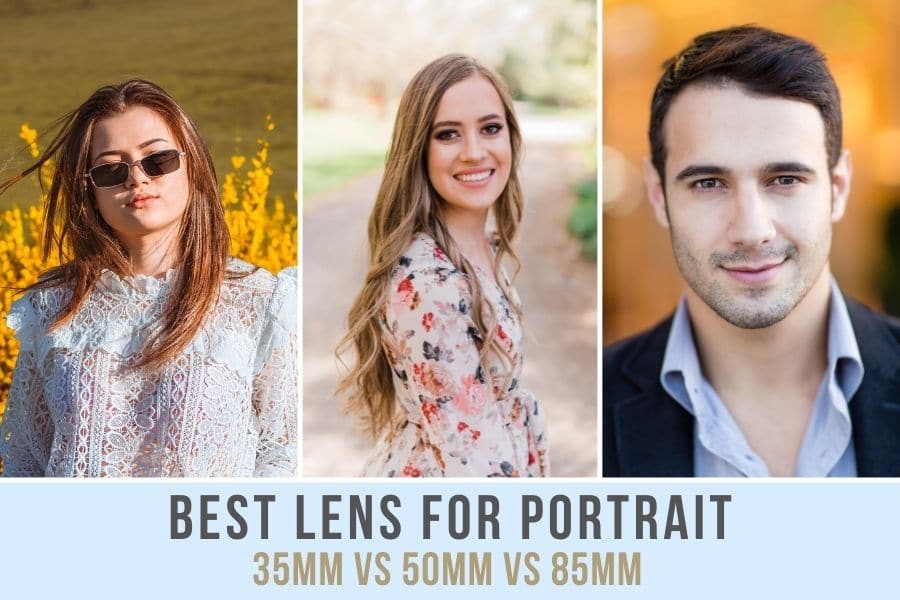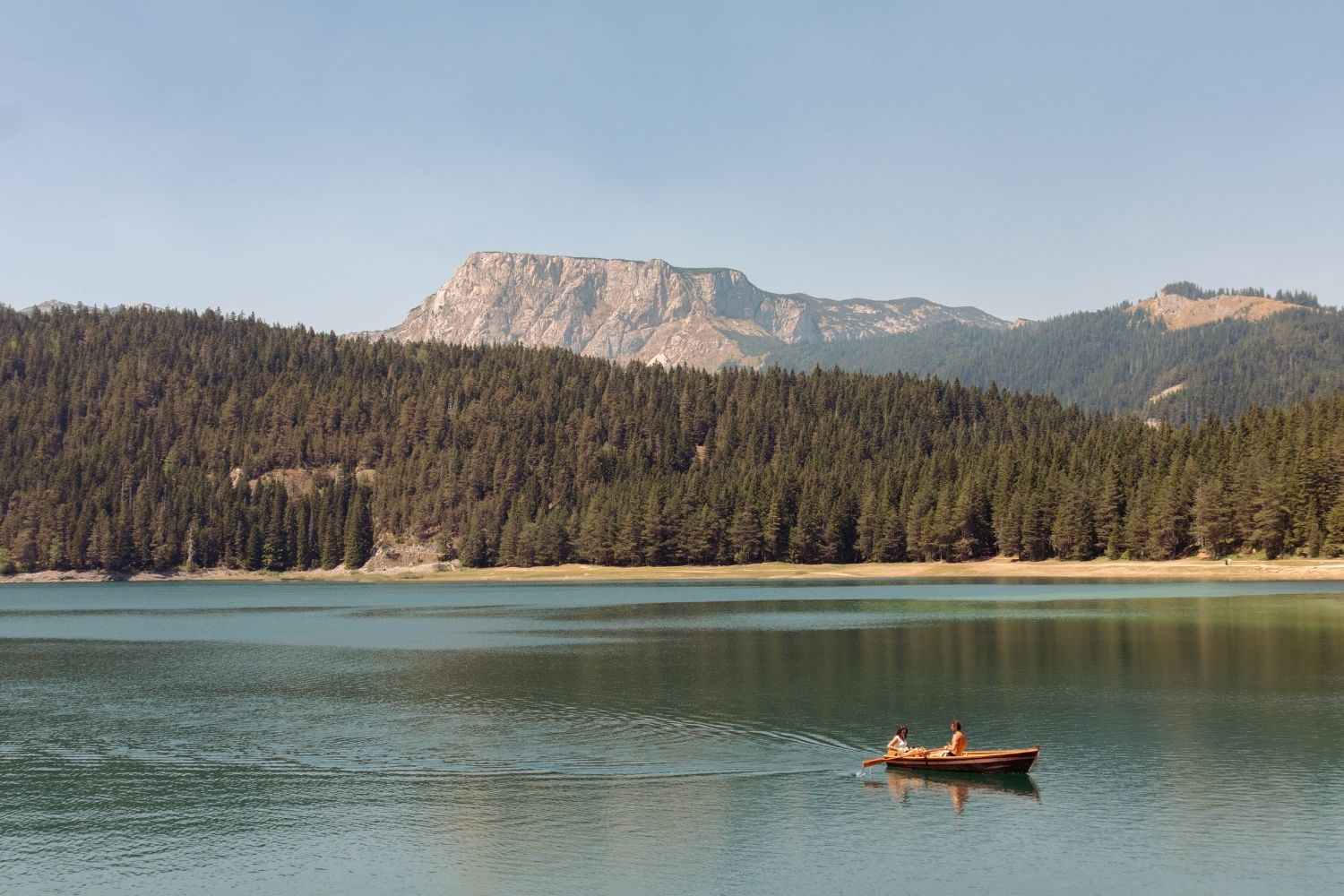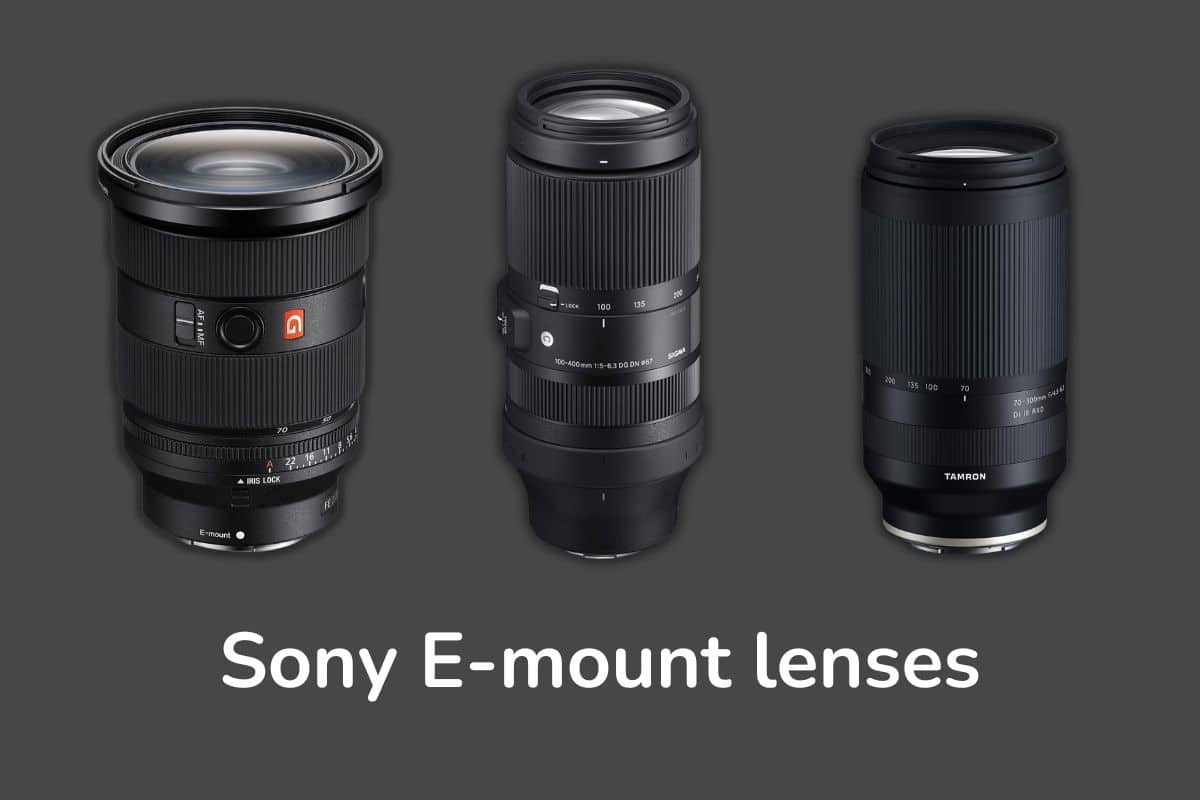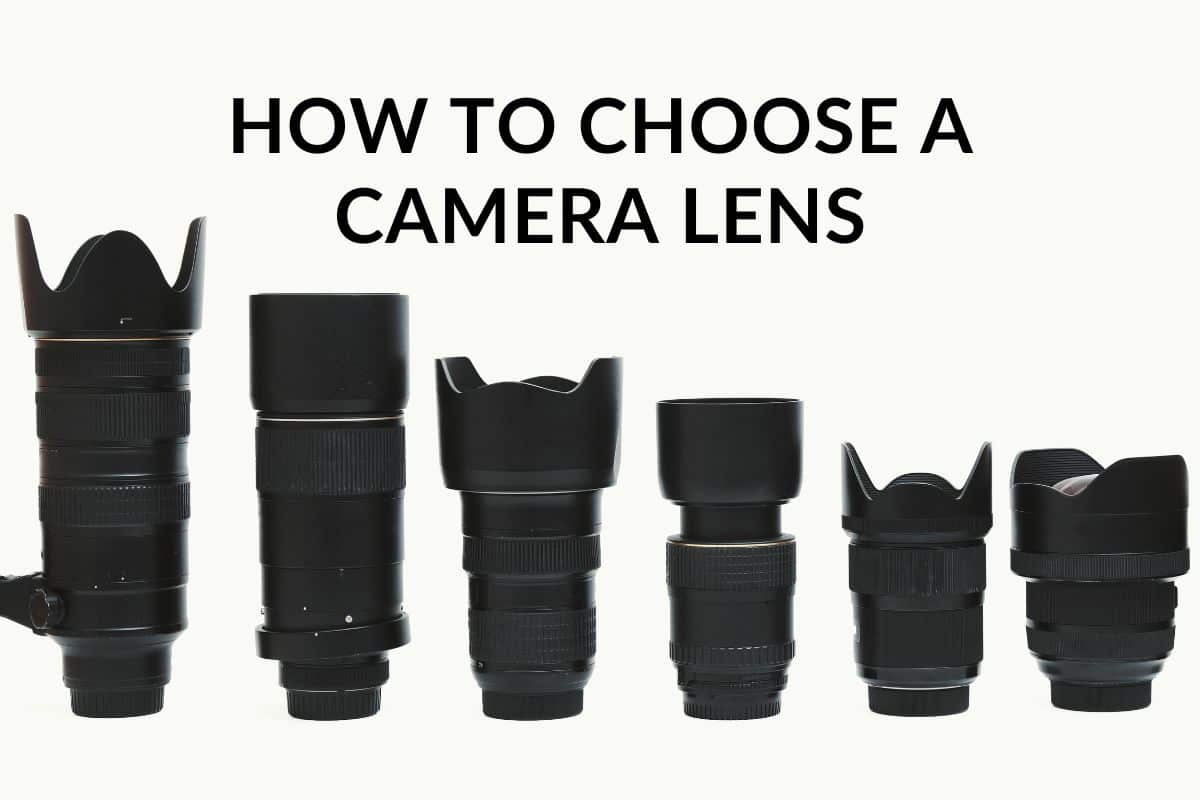Truthfully, this question is a tough one to crack because all three lenses are excellent lenses for portrait photography. But, the simple way to approach it is to decide the kind of result you want to achieve. Then, measure the strengths and weaknesses of all three lenses to see which one is best for what you want to see in your portraits.
Sounds easy, right? Well, in reality, it’s a decision. But don’t worry; we designed this article to help you decide which of these three lenses would deliver the desired result. We highlight which of them is the best lens for portrait pictures. Keep reading to get clarity.
Read more: How to Choose a Camera Lens That Fits Your Needs.
Disclosure: This article features affiliate links, including Amazon.com. If you decide to buy through one of these links, I’ll earn a small commission at no extra expense to you. For more details, please see my disclosure policy.
What is the best lens for portrait photography?
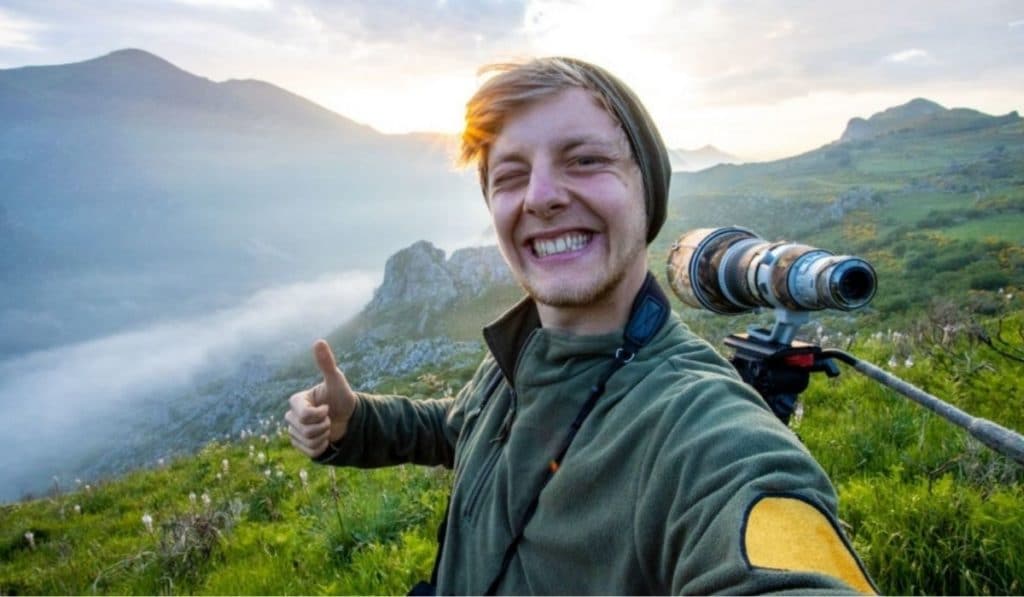
When it comes to portrait photography, you can get away with taking portrait pictures with any camera lens. Every lens gives you a different result, overshadowing your picture with a message, tone, feel, etc. For the sake of perfection, you’ll need to carefully select your lens, especially when it comes to portrait photography.
Truthfully, if you aim to take portrait pictures that send a message, you should try any of the 35mm, 50mm, or 85mm lenses from some of the best camera brands like Nikon, Canon, etc. You’ll be able to take fantastic pictures. However, if you edit your photos as a finishing touch, it will look more charming.
35mm vs. 50mm vs. 85mm: Which One is Right for You?
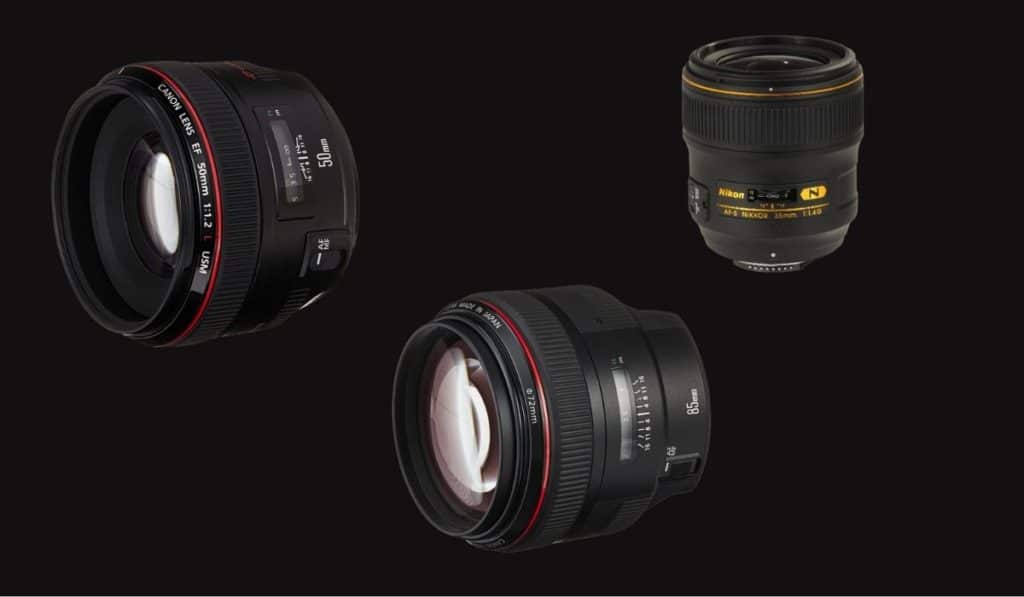
The 35mm, 50mm, and 85mm lenses are great choices but suit different needs. We’ll show you the best use contexts for each lens. Then, you’ll decide which is the best lens for portrait photography. Keep reading.
35mm Lens for Portrait Photography
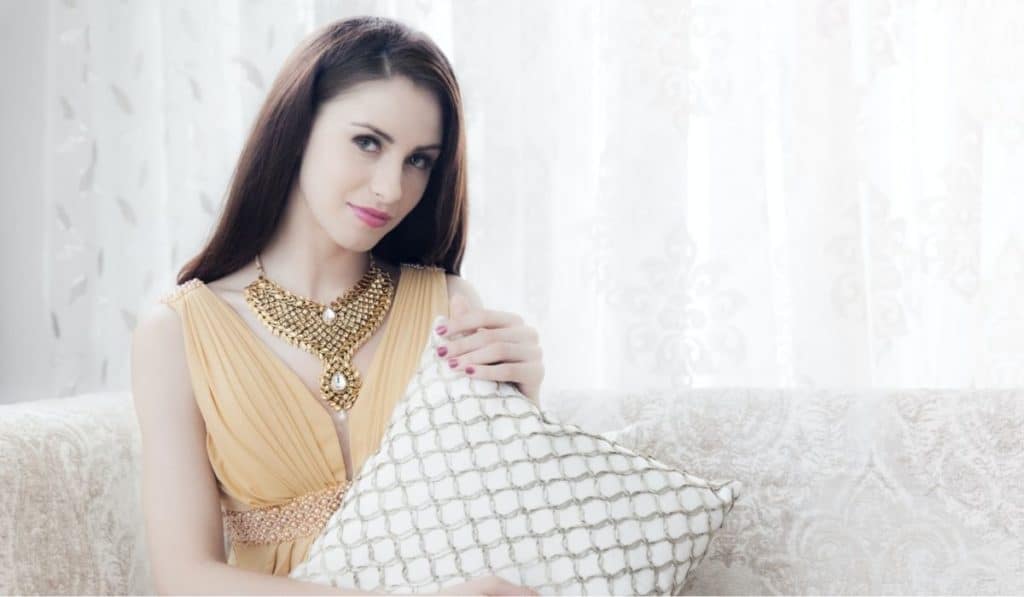
Before purchasing a 35mm lens for portrait photography, consider the pros and cons. It would help you select the right lens for you. Check out the pros and cons of the 35mm lens.
Advantages of using 35mm lens
Versatility:
If you’re looking to purchase a lens that would be something of a one-size-fits-all kind of lens, opt for a 35mm camera lens. It’s the best lens for family portraits outdoors, thanks to its ability to capture perfect wide-angle shots. The 35mm lens is relevant in any photography, from Landscape, product photography, model photography, etc. You’ll conveniently take pictures at any location- indoors, outdoors, etc. A 35mm lens is simply flexible.
Perfect for Low Light:
A photographer’s weakness is losing natural light when shooting outdoors. But you no longer need to be scared of shooting in the evening or at night as a 35mm camera lens has a considerably wide aperture.
Focal length:
The focal composition of the 35mm lens would give you a more realistic representation of the captured image, laced with heavy creativity. Shooting with a 35mm lens is like shooting through the human eye.
Captures perfect angles:
Whether it’s nature photography you use this lens for or portrait photography, you’ll enjoy the 35mm lens as it captures your subject perfectly. It tells your story from a deeply artistic angle.
Compact and Portable:
Another impressive feature of the 35mm lens is its portability and compact size. You can carry it around without feeling the impact of weight.
The disadvantage of using a 35mm lens
Lacks the Zoom feature:
35mm prime lens lacks the zoom in and out part. So, if you want to shoot a portrait picture of someone outdoors to add the scenery dramatically to the picture, you won’t be able to zoom in and out with the lens. You’ll have to do it manually- by moving closer or farther from your subject.
Expensive:
If you’re gunning for the best 35mm, precisely a 35mm f/1.4 lens, you should know it’s expensive. But investing in it would be worthwhile.
Why you should use a 35mm lens for portraits
A 35mm lens has a wide lens that’ll quickly breed distortion in your pictures. But there are tactics you can deploy that’ll eliminate the facial distortions and other issues that might arise. It would help if you used the 35mm lens for the sake of details.
Aside from that, you can capture dramatic and artistic portraits of your subjects by incorporating background elements, and you’ll quickly get more objects into your frame.
50mm Lens for Portrait Photography
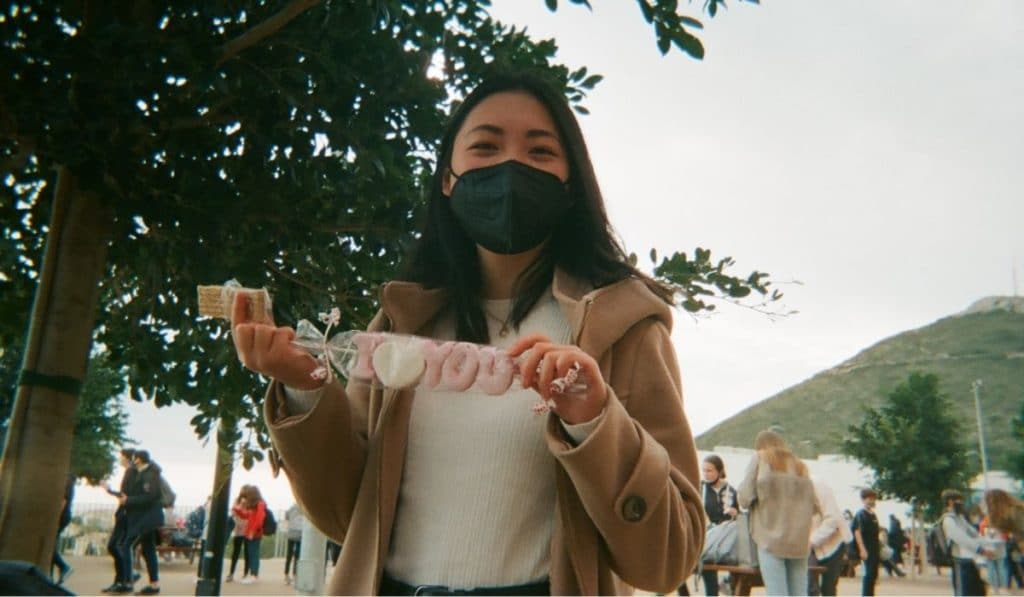
Another incredible camera lens for portraits is the 50mm lens. Traditionally, the 50mm camera is one of the best portrait lenses. Let’s check out the tricks it can do below.
Advantage of using a 50mm lens
Speed and light:
A significant quality of a 50mm camera lens is its speed, and it also has a wide aperture, which calls the bluff of low-lit surroundings. You can choose to shoot in low-light conditions with this camera lens.
Depth of Field:
You’ll quickly add depth of field to any picture you take with this lens as it has a wide aperture and lens speed. The depth of field you can achieve with this lens makes the objects out of focus look appealing, so they complement your subject.
Compact:
If you’re looking for the best lens size for portraits, a 50mm should be on your list, mainly because it is a great travel buddy. Thanks to its compact size, you can have fun taking pictures while you travel with a simple setup.
Picture quality:
You might not need to use the same expensive lens they use to take incredible pictures with fantastic quality like your mentor photographer. A decent 50mm lens can get you the badass picture quality you yearn for.
The disadvantage of using a 50mm lens
Composition:
While this lens gives you the best result for portrait photography, you’ll realize that the problem you’ll encounter is capturing all the elements of a picture in a frame. You’ll have to think outside the box to execute an excellent portrait composition with many aspects in a frame.
Zoom Feature:
When taking pictures, 50mm camera lenses are fixed, and you can’t zoom in and out of your subject through a 50mm lens. Move closer if you think the distance between you and your subject is too far.
Why you should use a 50mm lens for portraits
When you look through a 50mm lens, you’ll see your subject like you’re viewing through the vantage point of the human eye. Aside from that, their wide f/1.8 aperture makes this lens perfect for capturing your subject in a dimly lit environment or when you’ve lost daylight. As a result, you’ll also enjoy the bokeh effect on the out-of-focus so that they look beautiful and professional.
85mm Lens for Portrait Photography
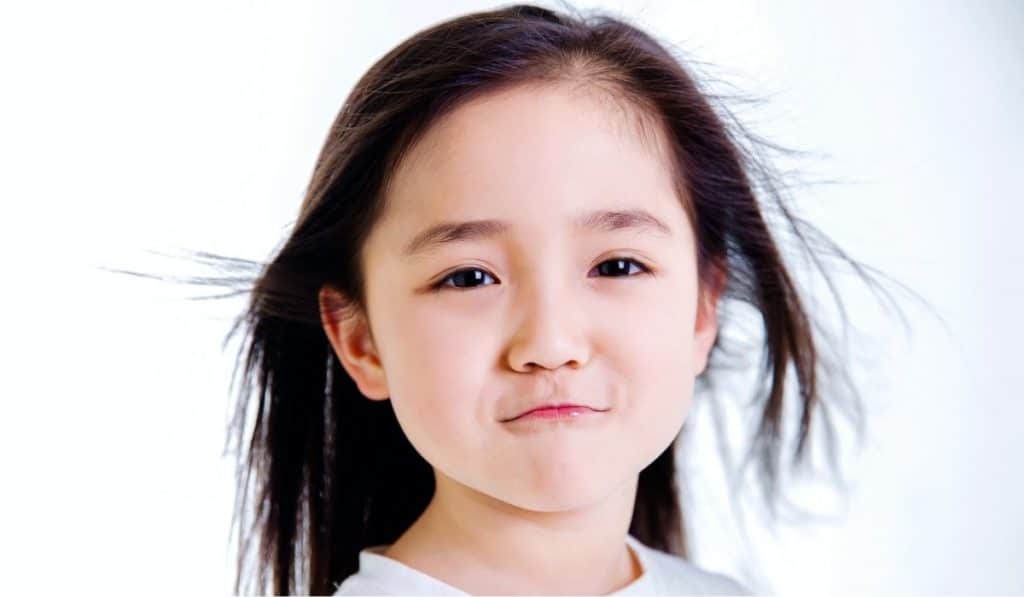
The 85mm lens is usually called the best camera lens for portraits. There are valid reasons to think this lens is one of the perfect lenses for portrait photography.
The advantage of using an 85mm lens
Less Distortion:
Facial or picture distortion is a common problem you’ll encounter when shooting with a 35mm or 50mm lens. However, you can always find a way to work around it. An 85mm lens can capture perfect up-close and full-length portraits without facial distortions.
Depth of field:
The depth of field you’d experience with an 85mm lens is unlike what you’ll ever capture with 35mm or 55mm. The depth of field you’ll achieve with an 85mm lens is deep, detailed, and beautiful. It utilizes whatever background you’ve got and transforms it into a magical scene for beautiful pictures.
Background control:
The 85mm lens has the best focal length for portraits as it empowers you to control your background, thanks to its focal length.
The disadvantage of using an 85mm lens
Limited by Space:
Although the 85mm lens has a fantastic focal length, shallow depth of field, and perspective compression, tight spaces are its Achilles heels. You won’t enjoy shooting with an 85mm lens indoors, especially if the space is tight.
Slow focus:
When shooting with an 85mm lens with a wide-open aperture, you’ll have difficulty focusing your lens on your preferred subject- and it’s worse when the environment is not well-lit. So, if you’re shooting objects in motion, you might want to try another lens.
Why should you use an 85mm lens for portraits?
For starters, the 85mm lens is the best focal length for portraits, as recommended by expert photographers. You’ll enjoy less distortion in your pictures regardless of the distance. If you want more outdoor portrait shoots, this lens is perfect.
35mm vs. 50mm vs. 85mm lens – Comparison Chart
| Portrait Types | 35mm | 50mm | 85mm |
| Studio Portraits | No | Yes | Yes |
| Subject and Background Portraits | Yes | Yes | No |
| Mid-shot Portraits | No | Yes | Yes |
| Full-length Portraits | Yes | Yes | No |
| Length Mix Portraits | No | Yes | No |
| Close-up Portraits | No | Yes | Yes |
| Scenery/ Environment Portraits | Yes | No | No |
| Indoor Portraits | Yes | Yes | No |
| Outdoor Portraits | Yes | Yes | Yes |
| Small spaces-Portraits | Yes | Yes | No |
| Large spaces- Portraits | Yes | Yes | Yes |
| Group Portraits | Yes | Yes | No |
| Senior Portraits | Yes | Yes | Yes |
| Lifestyle Portraits | Yes | Yes | Yes |
| Editorial Portraits | Yes | Yes | Yes |
35mm, 50mm, or 85mm lens – Which lens should you choose?
When deciding the best camera lens for portraits among these three lenses, it’s safe to consider the standard practice adopted by expert photographers. Based on the standard, the 50 and 85 mm lenses are the best portrait photography lenses.
That’s because these lenses eliminate the face distortion issues with the 35mm lens. That doesn’t mean you can’t use the 35mm lens to shoot portraits. You can try it if you can tweak it to get better results with the 35mm lens. More so, feel free to try out another focal length lens for portrait photography.
What’s the biggest difference between the 35mm, 50mm, and 85mm?
While there are many differences between the 35mm, 50mm, and 85mm lenses, the primary marker is the focal length of all three lenses. The 35mm lens has the widest lens, capturing the scenery and your subject.
The 85mm lens has a narrow focal length, which would boldly highlight your subject while blurring the background fantastically- your image would flawlessly stand out as it captures the details. The 50mm lens combines both focal lengths decently- you can use it to capture portraits with wide and narrow frames.
Recommended 35mm, 50mm, and 85mm Lenses for Portrait Photography
We’ve got you covered if you’re shopping for a camera lens for portrait photography that’s a 35mm, 50, or 85mm lens. Here are some recommendations based on expert advice.
1. Canon EF 85mm f/1.2L II
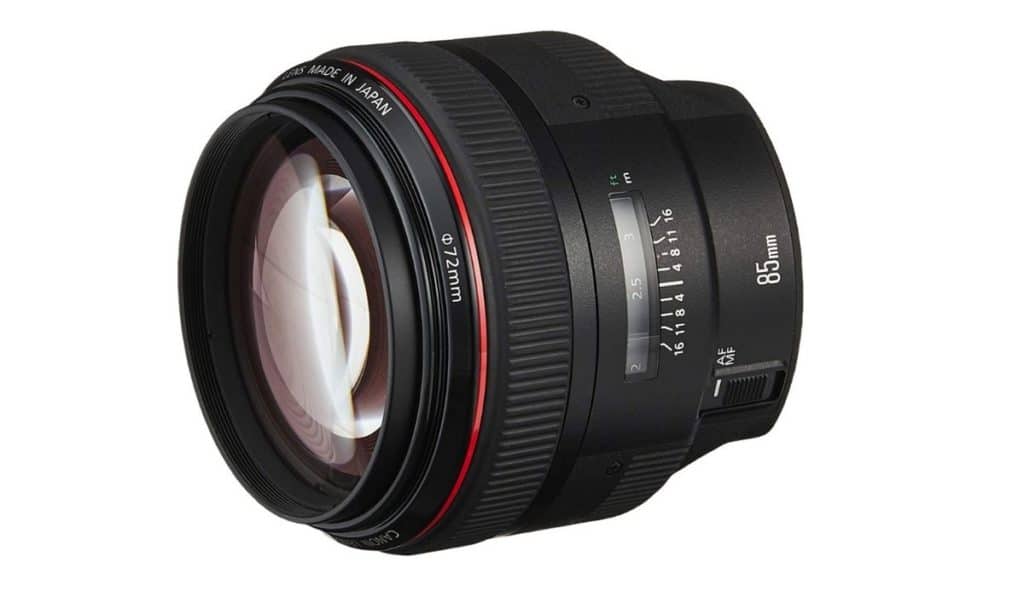
Crowned by Canon as their definitive portrait lens, this is the best Canon camera lens for portraits within the 85mm range. It has the perfect bokeh that adds that beautiful touch to your pictures. This lens is versatile as it is used in different portrait photography contexts. You’ll get 1.8x faster autofocus speed from this lens, thanks to its high-speed CPU, optimized algorithms, and Ring-type USM. Check availability on Amazon!
2. Canon EF 50mm f/1.2L
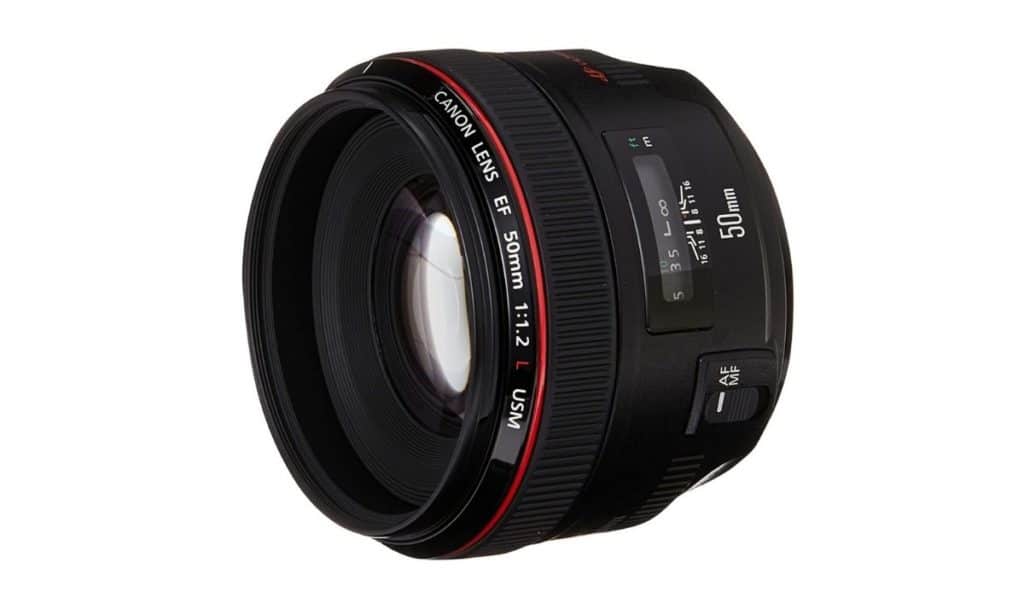
This lens is your best bet at getting an excellent 50mm lens. It is the best Canon lens for portraits on a budget. It earned that title because of its high-end quality. It is one of the sharpest 50mm lenses you’ll probably have. The autofocus is fast compared to older models. This lens works perfectly for any shooting. Check availability on Amazon!
3. Nikon 35mm f/1.4G
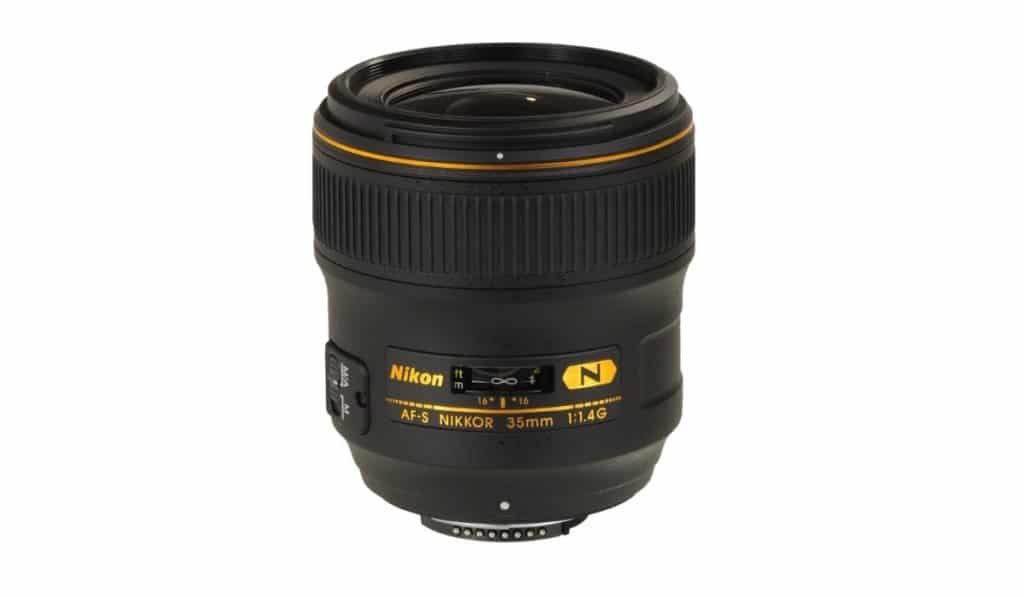
We’ll refer to this lens as the best Nikon portrait lens because its fast lens captures your picture with great bokeh. This lens owes its speed to its naturally wide aperture and is perfect for any situation. Check availability on Amazon!
Final Verdict
Perhaps you’re in the middle of getting a lens for portrait photography to premiere your career as a portrait photographer. But you’ve been stuck trying to figure out the lens best for portraits- 35mm, 50mm, or 85mm. You’re not alone; we’ve highlighted the difference between these three lenses in this article. All you need to do now is to read this piece carefully, decide the purpose, and use the context of the lens you want.
Read more:
Canon EOS M50 lenses;
Sony camera lenses;
Nikon camera lenses.
Author bio:
Amy Grace, a devotee writer of Clipping Path Studio, has long experience in the commercial photography field. Merging competency and skill in her profession, she has nailed the task up to the mark and has helped many entrepreneurs create their brands. Aside from photography, Amy is involved in photo retouching work as well. Follow her on Twitter, Instagram.
PIN IT
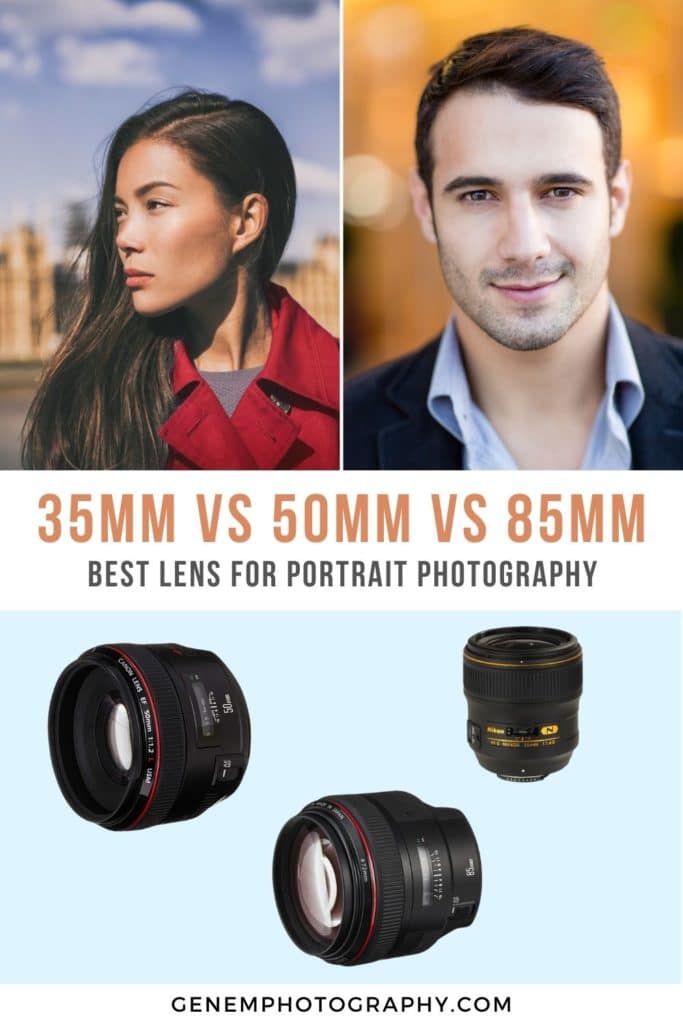
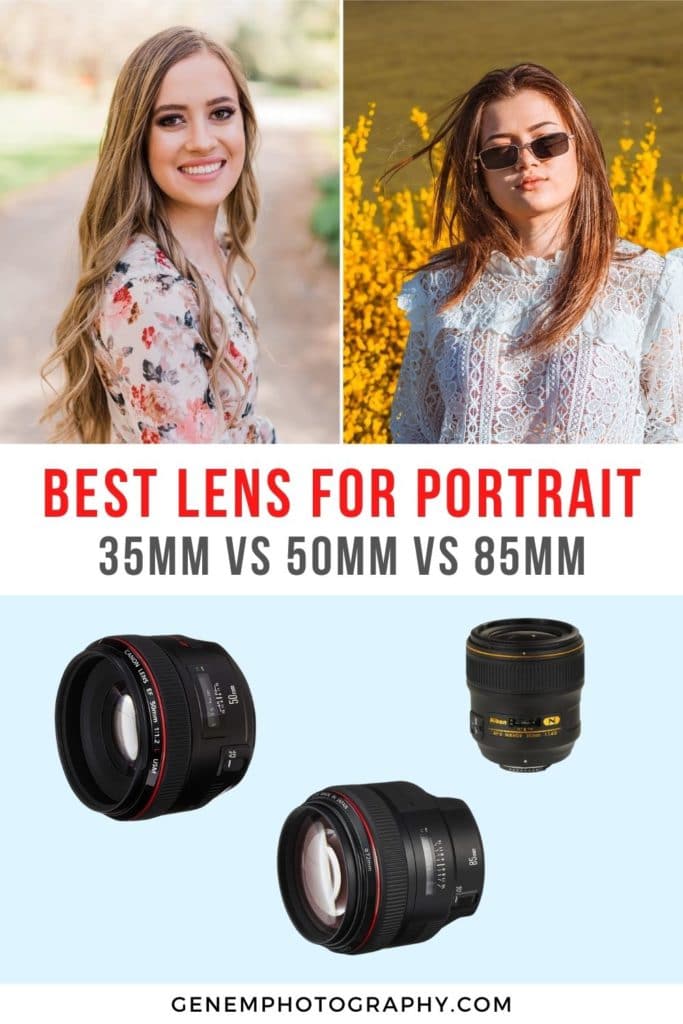
Recent posts:
